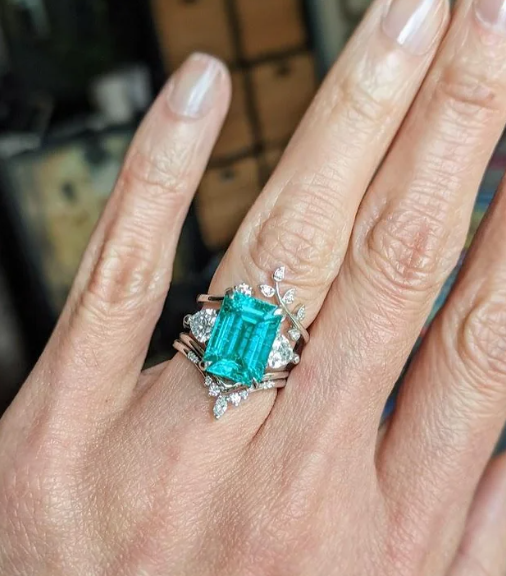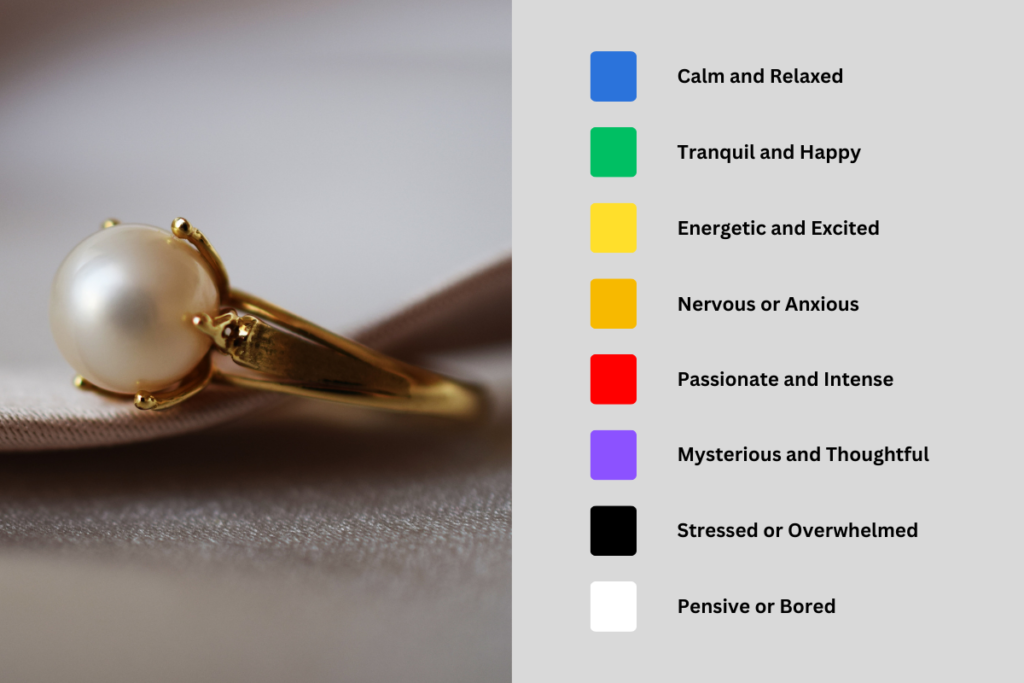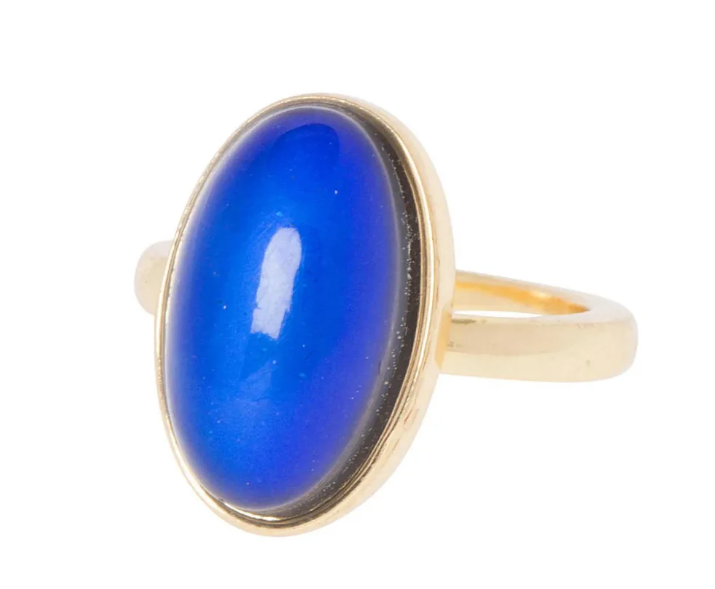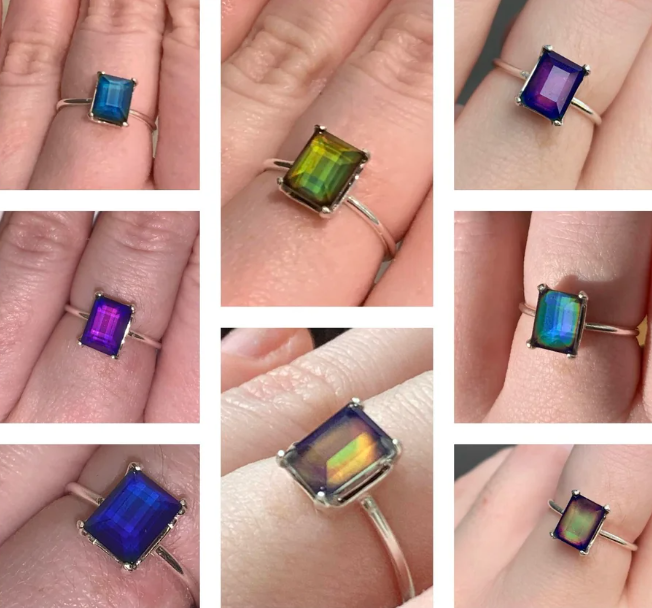Mood rings have fascinated individuals for decades with their ability to seemingly reflect the wearer’s emotions through changing colors. These fascinating accessories gained popularity in the 1970s and have remained a unique and intriguing fashion statement ever since. In this insightful article, we’ll deep dive into the captivating world of mood rings, exploring the science behind their color-changing phenomenon and uncovering the meanings associated with each color tint.
The Science Behind Mood Rings
Mood rings operate on a simple yet fascinating principle – they respond to changes in body temperature. The central part in a mood ring is a hollow, liquid crystal-filled stone that is thermochromic, meaning it changes color based on temperature variations. The liquid crystals within the stone are sensitive to temperature changes, causing them to twist and alter the way they absorb and reflect light, resulting in the color change.
Body temperature is known to fluctuate with emotional states, and while the relationship between temperature and mood is not an exact science, mood rings capitalize on this connection to provide wearers with a colorful representation of their perceived emotions.
Also Read: The Ultimate Wedding Set Buying Guide
Understanding the Color Spectrum
Mood rings typically exhibit a wide range of colors, each associated with specific emotional states. While the interpretation may vary from person to person, there are a few general understandings and meanings behind the various colors that are emulated by the mood rings. Some of the most common colors found in mood rings and what those colors say about your mood are as follows .
- Blue – Calm and Relaxed
Blue is often associated with a serene and tranquil state of mind. When a mood ring displays a blue hue, it suggests that the wearer is calm, relaxed, and experiencing a sense of peace. This color indicates a balanced and content emotional state.
- Green – Tranquil and Happy
Green is commonly linked to feelings of happiness and tranquility. When a mood ring turns green, it suggests that the wearer is in a positive and harmonious state of mind. This color is associated with contentment, balance, and a sense of well-being.
- Yellow – Energetic and Excited
Yellow is a vibrant and energetic color, symbolizing excitement and heightened energy levels. When a mood ring takes on a yellow tint, it indicates that the wearer is enthusiastic, lively, and possibly experiencing a surge of creative energy.
- Amber – Nervous or Anxious
Amber is often associated with mixed emotions, leaning towards nervousness or anxiety. A mood ring displaying an amber color suggests that the wearer may be feeling a bit uneasy or uncertain. It can also indicate a blend of emotions rather than a clear, distinct state.
- Red – Passionate and Intense
Red is a bold and intense color, often linked to strong emotions such as passion and excitement. When a mood ring turns red, it suggests that the wearer is experiencing heightened emotions, whether positive or negative. This color can represent love, anger, or intense enthusiasm.
- Purple – Mysterious and Thoughtful
Purple is a color associated with mystery and deep contemplation. When a mood ring exhibits a purple hue, it suggests that the wearer is in a thoughtful and introspective state. This color can indicate a desire for self-discovery or a willingness to explore complex emotions.
- Black – Stressed or Overwhelmed
Black is often interpreted as a sign of stress or feeling overwhelmed. When a mood ring appears black, it suggests that the wearer is experiencing intense negative emotions, such as anxiety, fear, or extreme stress. It serves as a signal to take a moment for self-care and relaxation.
- White – Pensive or Bored
White is associated with calmness, but it can also indicate boredom or a sense of detachment. When a mood ring displays a white color, it suggests that the wearer may be deep in thought, feeling neutral, or experiencing a lack of engagement with their surroundings.
Also Read: 6 Functional Jewelry Storage Ideas
Interpreting Mood Ring Colors Is Individualistic
It’s crucial to note that while mood rings offer a fun and visually appealing way to gauge one’s emotional state, the interpretations of colors can be subjective. Factors such as individual differences, cultural background, and personal experiences play a significant role in how someone perceives and expresses their emotions.
For some wearers, mood rings serve as a lighthearted and entertaining accessory, adding a touch of whimsy to their daily attire. Others may find deeper meaning in the colors, using the rings as a tool for self-reflection and mindfulness.
The Evolution of Mood Rings
Since their introduction in the 1970s, mood rings have evolved in both design and popularity. While the basic concept remains the same, contemporary versions often feature more intricate designs and higher-quality materials. Some mood rings now include additional elements like gemstones, allowing for a more sophisticated and personalized aesthetic.
In recent years, mood rings have made a comeback in fashion trends, capturing the interest of a new generation. Designers and jewelry makers continue to experiment with innovative ways to incorporate mood-changing elements into their creations, ensuring that these captivating accessories remain relevant and appealing.
Learn About The 19 Definitively Cutest DIY Projects
Tips for Maximizing Mood Ring Effectiveness
To ensure accurate readings and a more enjoyable experience with your mood ring, consider the following tips:
- Wear the Ring Properly: Ensure that the mood ring fits snugly on your finger. A proper fit allows for better contact with your skin, facilitating more accurate temperature readings.
- Stay Mindful of Environmental Factors: External factors such as room temperature, exposure to sunlight, or contact with hot or cold surfaces can influence the color changes in a mood ring. Be mindful of these factors when interpreting the colors.
- Give It Time: Allow the mood ring some time to adjust to your body temperature and reflect your current emotional state. Sudden movements or changes in temperature can impact the ring’s responsiveness.
- Clean and Care for Your Ring: Regularly clean your mood ring to remove any dirt or residue that may affect its performance. Follow care instructions provided by the manufacturer to ensure the longevity of your ring.
Also Read: 30 Small Living Room Ideas | Make the Most of Your Space
Conclusion
Mood rings continue to captivate individuals with their whimsical charm and ability to spark curiosity about the fascinating relationship between temperature and emotions. While the science behind mood rings is straightforward, the meanings associated with the colors add a layer of mystery, fascination and personal interpretation.
Whether you wear a mood ring for fun or view it as a tool for self-reflection, the ever-changing colors provide a unique way to express and explore your emotions. As you embark on your journey with a mood ring, remember that the true value lies in the enjoyment and personal connection it brings to your day-to-day life. Embrace the playful spirit of mood rings, and let the colors guide you through the diverse landscape of your emotions.




